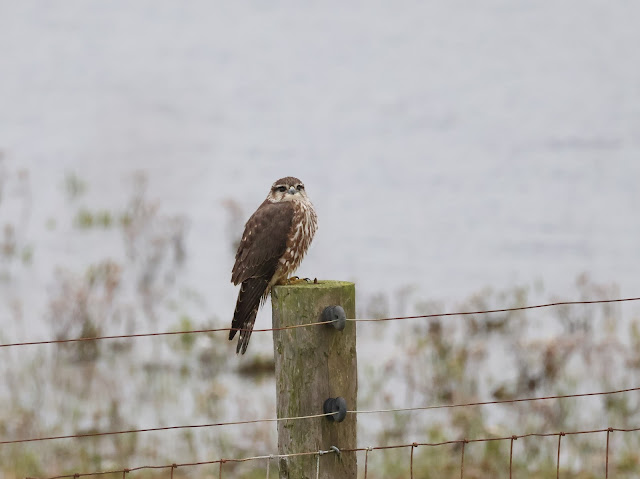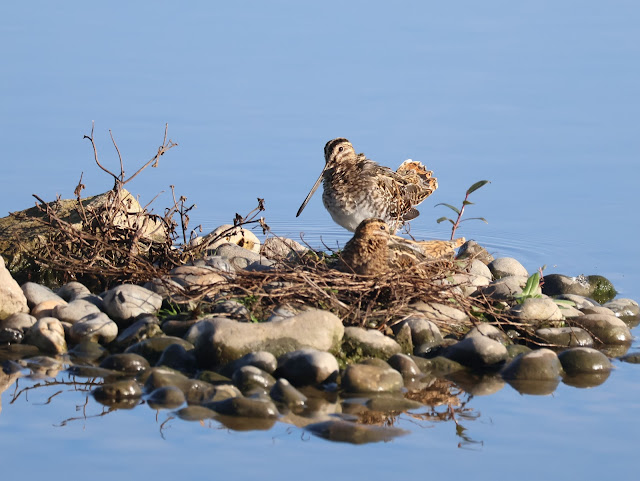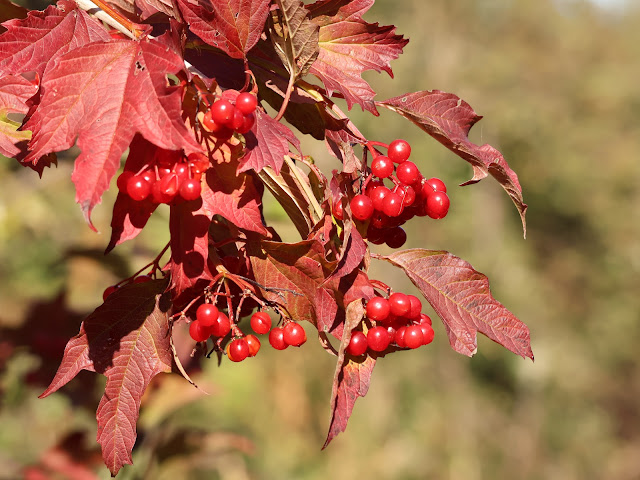It's been a while since I've visited Sussex, so when a friend suggested meeting up I decided to book an airbnb for a couple of nights near her before going on to stay with one of my daughters in Kent over half term. I also thought I'd try and include a couple of bird watching trips.
So Thursday morning found me driving to Pulborough Brooks rspb reserve in West Sussex. It was a glorious sunny day and I pulled up in the car park soon after 10 a.m. Going out through the visitor centre I followed the path to the hides. Firstly I stopped at a special area where smaller birds are regularly fed...sunflower hearts had been put in various piles on picnic tables and were being regularly visited by members of rhe tit family - great, blue and coal tits. A bug hotel made from pallets was doubling up as a bird table with bird food put inside and visitors to it included dunnocks and robins.
The hides looking over some pools were busy with birders . Geese and ducks were numerous on the water whilst a cream crowned marsh harrier hunted over the reed beds.
After enjoying soup from the café I made my way to another part of the reserve where a fungi trail had been created. Arrows pointed the way while information signs had been placed next to various types of fungi - I was amazed at all the different types!
My middle day (Friday) was originally planned to be birding morning in Ashdown Forest. However a dismal day meant that there were very few birds about and my trip to Old Lodge nature reserve failed to produce ang birds at all!
Saturday's birding trip sounded more promising despite a forecast of 30% rain. I had arranged to join a local rspb group from East Grinstead on a visit to Rye harbour Nature reserve, a large reserve on the coast. with a range of habitats. Fourteen of us met in the car park and I was made to feel welcome by the other group members. Although mainly cloudy there were a few patches of blue sky and no breeze and it felt mild. Hopefully the rain would hold off as it was a very open area ,the only shelter being the hides.
We headed down the wide track onto the reserve and didn't need to go far before we found our first birding area, a small stream. A Cettis warbler was calling intermittently and a kingfisher perched on one of the overhanging branches for a while before flying off again. A bit further on we stopped to look over to some pools where we watched redshanks, little egret, spoonbills and curlew amongst the various ducks.
We continued walking slowly until someone spotted a fast flying merlin which flew down and perched on a distant log amongst the rough grass in the fenced off area to the right of the path. It sat motionless for some time before flying up on to a wooden post about 20 - 30 metres from the path. People were walking past regularly but it seemed unbothered. One of our group with a big camera and lens decided to walk ahead of the group to get a closer look so I joined him and we were able to get some very good views and some photos. I've only seen a merlin a few times and certainly never that close. The rest of the group caught us up and we were all treated to excellent views through telescopes owned by several of the group. Suddenly the bird left its perch and flew at speed after a goldfinch though we couldn't see whether it was successful as it disappeared over a building.
We made our way across some wooden planks up on to a shingle bank above the sea. The tide was coming in and we could see groups of small waders at the waters edge. These included ringed plovers and a single sanderling as well as a few gulls and oyster catchers though not near enough for photographing. We returned on a different route and entered a hide where several people ate their lunch though I hadn't brought mine with me. We saw several little grebes feeding right in front of the hide as well as a little egret. Various ducks and geese were on the islands as well as a few more waders including black tailed godwits and dunlin.
On the way back to the start we found a pair of stonechats perching on fence posts and had a pleasant surprise when a dartford warbler appeared, flitting about in the scrub behind the fence.
All in all an enjoyable and productive day with a couple more species new for the year.










































.JPG)
